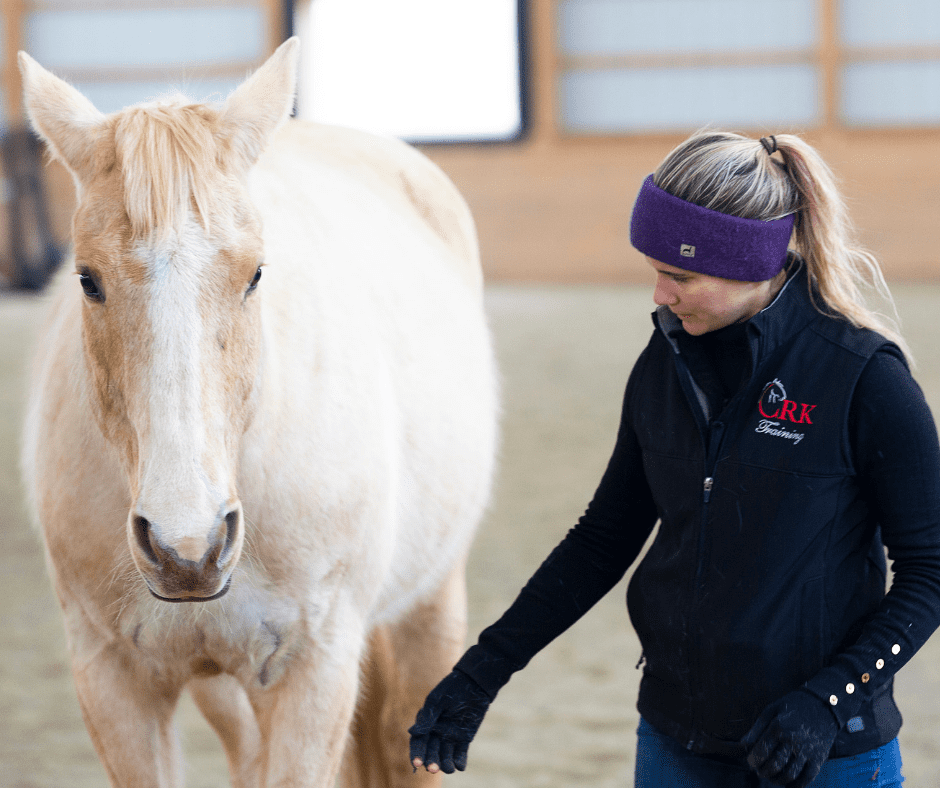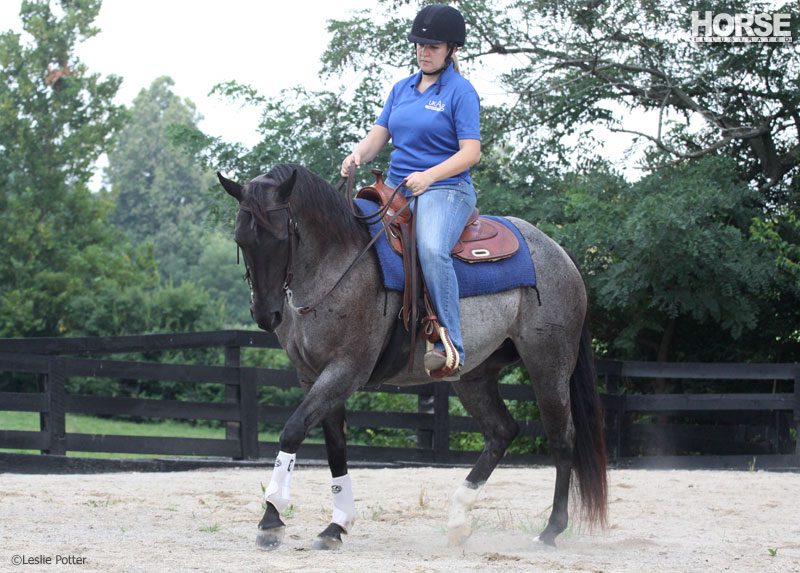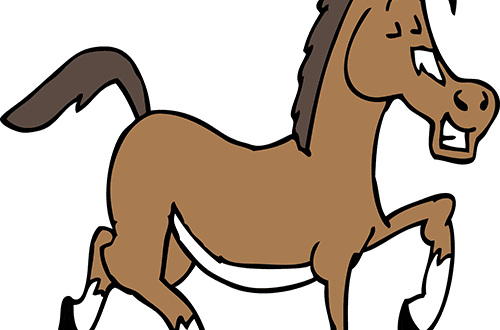
Does the horse annoy you under the horseback? Deal with it! (advice for beginners)
Does the horse annoy you under the horseback? Deal with it! (advice for beginners)
When a horse begins to show behavior under the saddle that is unpleasant for the rider, you should try to correct it as quickly as possible. However, when trying to influence a horse, consider what the real reasons for his behavior are.
hurried horse
Prone to undermining and spacing, a hurried horse is an amateur partner. The first thing that comes to mind for most riders who are faced with such a problem is to change the iron to a more strict one. But this approach does not reveal the essence of the problem. Removing the “symptoms”, they do not treat the “disease” itself.
The main thing to do in this case is to try to identify the causes of the horse’s anxiety and those first signs of it that it begins to show. The flight response is triggered by nervousness, uncertainty and fear, so the horse seeks a way out by running away. That’s why when you teach a horse to accelerate on command, it’s important to first only ask him to take a few quick steps at a time, so he knows he can go fast and stay calm.
Your goal is to maintain control of the horse’s speed by keeping his hindquarters engaged and his shoulders mobile. This is achieved by working around the circle and making changes of direction through tight turns.

Use a bridle with a simple snaffle or with a loose mouthpiece with short levers, hold the rein in two hands.
Move on a medium sized circle on the trot. Shorten the inside rein using enough steady pressure to slightly bend the horse’s neck and bring it into the circle (you can see the horse’s eye). At the same time, maintain light contact with the outside rein to ensure proper control of both sides of the body. Lightly press the inside leg a couple of inches from the girth to the side of the horse to push his chest out and give his body a curve in the path of the circle. In this position, it will be more difficult for the horse to lean against your hand. Such a frame also connects its hind legs – the horse puts them deeper under the body, which allows you to maintain a constant speed and control it.
Then we perform changes of direction, making sharp turns. While riding in a straight line at a walk or trot, when you feel your horse picking up speed, steer the lead into a tight half turn or ¾ turn. Raise the reins until you feel a connection with the horse’s mouth, and then gently push him in the direction of the turn. Help the horse by shifting your weight back and pushing him forward with both feet. When the horse’s hindquarters work properly in the turn, you will feel that he is lighter on the bit and takes lighter steps.
Sluggish and slow horse
The exercises mentioned above will help speed up and revive a sluggish horse that doesn’t respond well to your leg. If the horse is not leg sensitive, use the request->demand->order sequence to increase his sensitivity. First try asking the horse to move forward using constant leg pressure and encouraging him with verbal commands such as smacking. If that doesn’t work, ask the horse to follow the command by pushing the legs harder, rhythmically squeezing his flanks. If that doesn’t work, demand even more leg pressure, duplicating them with a whiplash. This should only be done in extreme cases. If you consistently use these three steps, your horse will learn to respond to more subtle “requests” and “demands” and “orders” will almost completely become a thing of the past.
The horse bogs and goes to the side
Imagine that you are pushing a wheelbarrow in front of you. You control it by lowering the hand in the direction you need to go lower – this is how you show the turn. The same thing happens when the horse lowers the inside shoulder—he leans in to turn. It can also cause a tendency to deviate from the following path. Fighting your horse’s tendency to move out of line is a matter of controlling his front legs and being able to keep his shoulder from sticking out.
Start by lifting your horse into a trot and moving in a small square path. Feel the outside rein as you approach the corner so you can turn your horse’s head away from the turn. Pull the inside rein away from the horse’s neck to create room for him to move his shoulders. Then remove the inner around the corner. Once your horse learns to move his shoulders away from the pressure of your leg, use the same signals but with the inside rein and leg to keep him from moving out of line.
stargazer horse
If the horse is stargazing, first you will need to check if the saddle and bit are suitable for him, if the horse has dental problems and think about whether you are making mistakes as a rider.
A properly fitted saddle that fits the horse and a good saddle pad/pad allows the horse’s muscles to function properly and its spine to flex. If the saddle doesn’t fit the horse properly, it won’t evenly distribute your weight. This can create areas of painful pressure on the horse’s muscles, spine or withers. Even a patient and well-trained horse will begin to turn its head in search of relief.
The saddle should lie on the horse’s back, without pinching or pressing anywhere; it should not touch the withers and spine. Signs that the saddle is pressing down, restricting blood circulation at pressure points, are dry or chafed areas on the back, which you will see when you remove the saddle and saddle pad. Place the saddle behind the shoulder blade so as not to cause discomfort to the horse’s back.
Back pain isn’t the only reason your horse can’t maintain proper head and neck position. Have your veterinarian or horse dentist examine her teeth for tops and jagged edges.
An inappropriate snaffle can also prevent your horse from relaxing and lowering his head. In addition, you can be rude to her with your hands. That’s why it’s important to evaluate how you communicate with your horse. Be aware of any tension in your body, arms or hands that may be transferred from you to the horse. Breathe deeply and evenly. Hold the reins gently, relax your arms so that the arm from shoulder to elbow hangs freely down along the body. The hands should be in front of the pommel of the saddle, with the elbows slightly in front of the hips. This way you will not create a feeling of constriction in the horse. When making contact with the mouth, work smoothly so that the horse does not become frightened. Apply light pressure and then wait a couple of seconds to give the horse time to react, gradually increasing the level of pressure as needed.
If the horse continues to star-gaze even after you have eliminated all previous causes, then you will need to teach him that rein pressure is a signal to lower his head and relax his topline, not tense up. Picking up the reins, keeping your arms stable, pull on one rein until you feel a firm feeling in your hand. Then wait until the horse flexes his neck, but do not release pressure until he lowers his head. Be patient and soften the reins as soon as the horse responds. Reinforce this new habit in the walk by working in circles, bending the horse inward. Then do the same on the trot. Soften the reins to reward the horse whenever his head goes down.
The horse works with its mouth open, jaw out
Perhaps your horse tends to open its mouth and stick its jaw out? The capsule will help close her mouth, but this will only eliminate the symptom. The main problem is often discomfort. Start by choosing another snaffle. The bite should be anatomical and follow the curves of your horse’s lower jaw. The snaffle should not pinch the jaw or tongue and should not have nicks or sharp edges. If you are working with a mouthpiece, make sure that the levers do not pinch the horse’s lips. Test this by gently pulling on the reins while standing next to the horse so that the levers go back.
Effective communication can also prevent your horse from showing his jaw. However, if it’s an established behavior, correct it by locking the reins into the saddle as you tighten your core muscles. This will prevent the horse from pulling you out of the saddle, ripping the reins out of your hands and throwing your balance off. Do not release pressure until the horse stops pulling. Avoid “tug of war” – you can’t win this game. Letting the horse pull on the reins while playing with itself (rein versus saddle) will remove the incentive to continue the behavior.
It doesn’t matter if you have years of experience with horses or if you’re just a beginner. Only you, as the rider, can influence the behavior of your horse under the saddle. To perform well, horses need consistency, confidence and clear communication. Every minute spent in the saddle is important and meaningful. If you want to improve your horse’s behavior pattern, work on it every time you’re in the saddle so that good habits become second nature for both of you.
Dale Radin (source); translation Valeria Smirnova.





